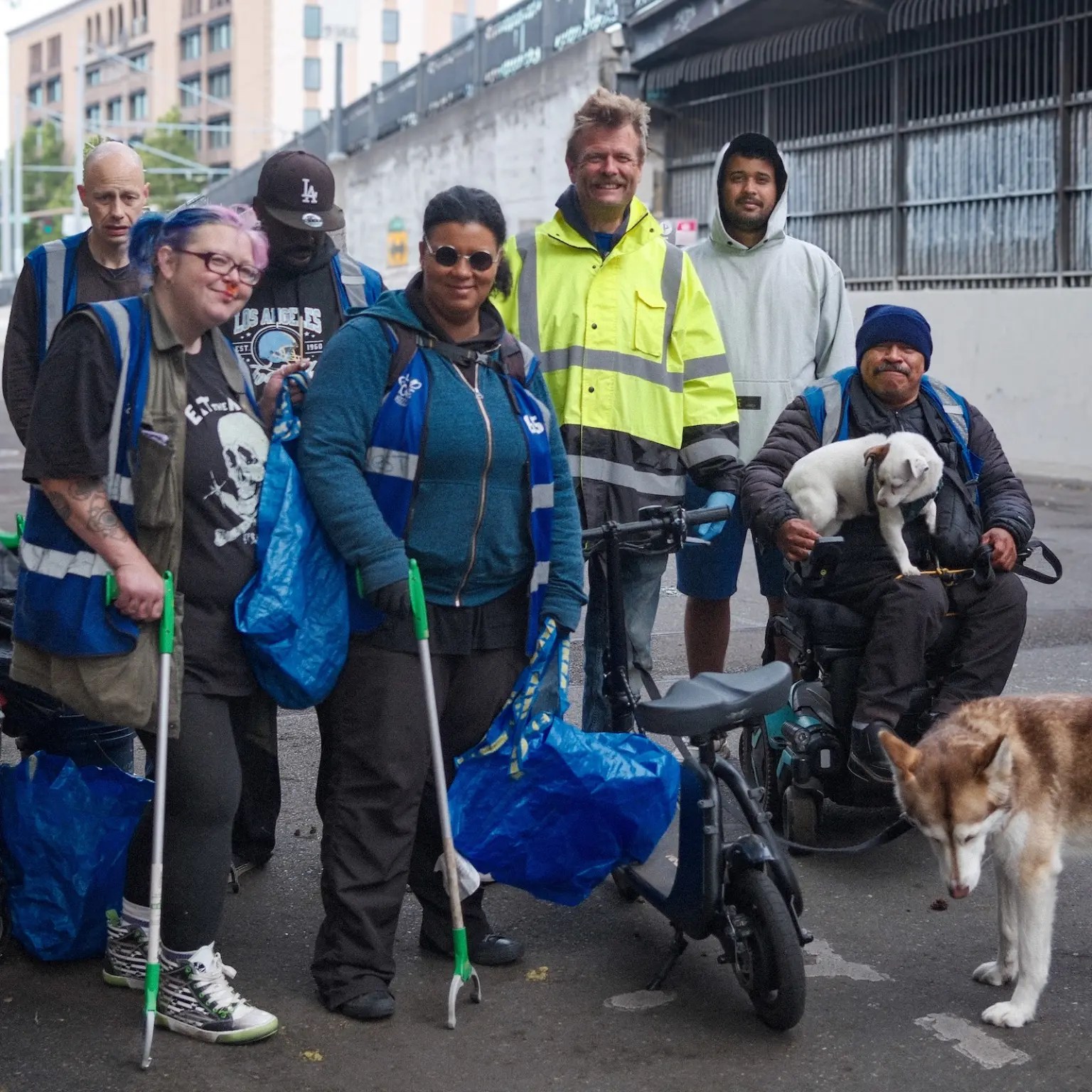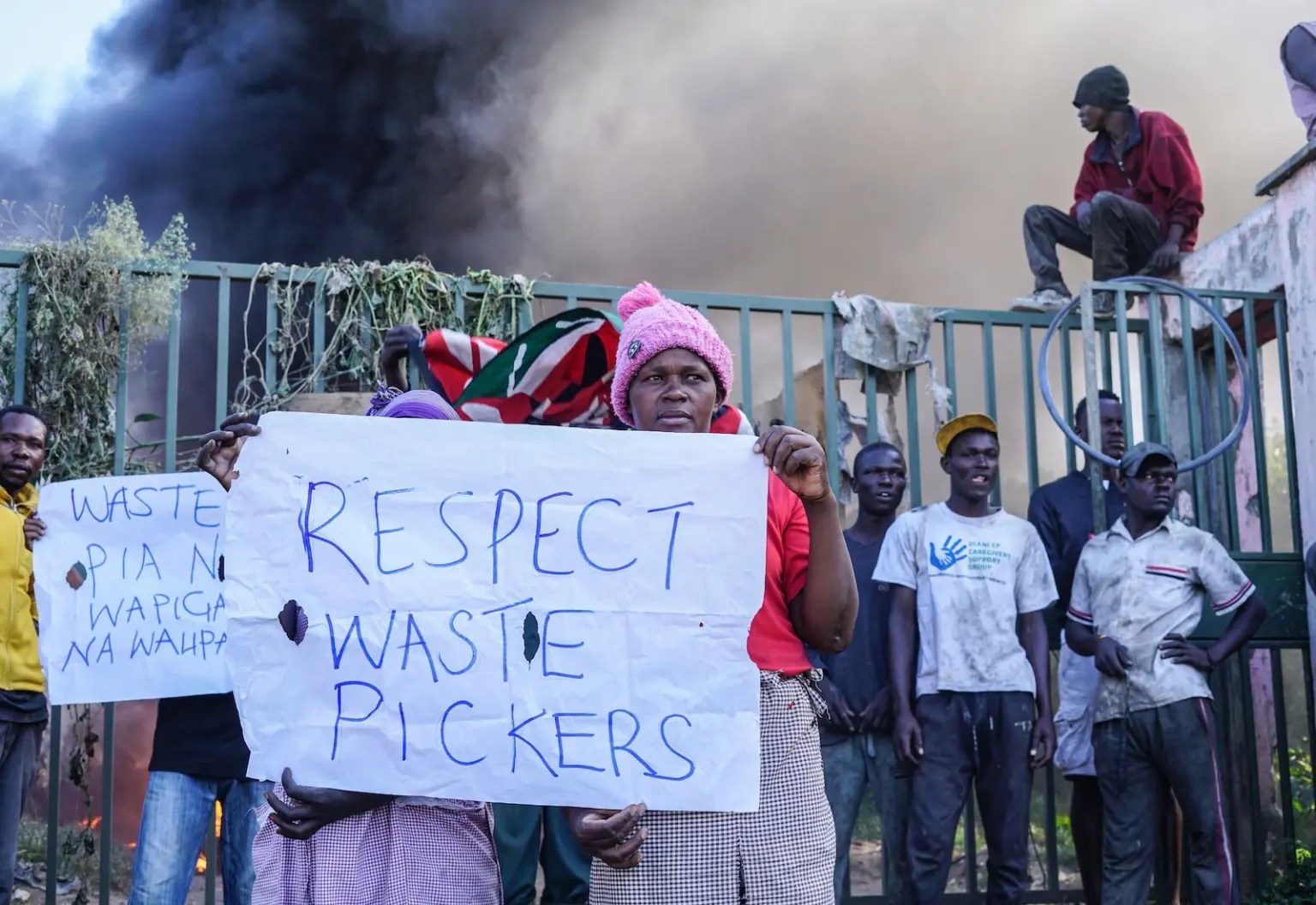Forget Dobbs—The Personhood Movement Wants Much More
To hear people in the anti-abortion movement tell it, the idea that human personhood begins at fertilization is as old as the Bible.But as abortion historian Mary Ziegler writes in her latest book, Personhood: The New Civil War Over Reproduction, the legal movement for fetal personhood only dates from the 1960s, when anti-abortion activists were losing state battles to reform abortion laws and needed a legal theory to justify strict bans. So they turned to the Constitution and found a strategy contained in the Equal Protection Clause of the 14th Amendment. Fertilized eggs, embryos, and fetuses are persons, they argued, and thus should have the same legal rights and protections as anyone else.
The US Supreme Court rejected this radical notion 50 years ago in Roe v. Wade, and in the process established the constitutional right to abortion. But when the court reversed Roe in 2022,inDobbs v. Jackson Women’s Health Organization, the personhood issue was suddenly back on the table—and abortion opponents were thrilled. They see personhood as the surest path to a total national abortion ban, one that could circumvent lawmakers, ballot initiatives, and state constitutions. “Overturning Roe wasn’t the end—it was the beginning,” Kristan Hawkins, president of the increasingly influential Students for Life, wrote on the platform X when Ziegler was on MSNBC earlier this month. “The fight was never just about state laws. It’s about recognizing the human rights of every preborn child. Personhood is the goal. Always has been.”
But even as personhood supporters strategize about how to get the Supreme Court’s conservative supermajority to take up the issue, at the state level, fetal personhood has already become deeply entrenched in politics and law. Take Georgia, for example, where, over her family’s objections, a brain-dead woman named Adriana Smith has been on life support for three months (and counting), because she is pregnant. Not only does the state’s LIFE Act, passed in 2019 but blocked until Dobbs, confer personhood on any embryo or fetus starting around six weeks, but residents can claim fetuses as dependents for tax purposes, state officials must include fetuses in population counts, and pregnant people can demand child support before giving birth.
Like Georgia, more than half of states have laws invalidating advance directives for end-of-life care if the patient is pregnant. (A new lawsuit is challenging one such law in Kansas.) Seventeen states have established fetal rights by law or judicial decision, Pregnancy Justice reports, and more than two-thirds have feticide laws that make it a form of homicide to cause a pregnancy loss, such as a miscarriage or stillbirth. The most frequent targets of personhood laws are women who use drugs during pregnancy, but since Dobbs, prosecutions of women for miscarriages and stillbirths have also surged.
Yet when Americans understand the full implications of fetal personhood, they overwhelmingly oppose it. Consider the backlash that followed last year’s declaration by the Alabama Supreme Court that IVF embryos are “extrauterine children”—a ruling that threw the fertility industry into chaos. Even Donald Trump criticized it, vowing to protect IVF and calling himself the “fertility president.” Ziegler, a law professor at the University of California-Davis and author of six other books about abortion, sees this widespread opposition as a hopeful sign for reproductive and women’s rights. “It’s really hard for me to imagine our politics changing to a point where Americans will be OK with a version of fetal personhood that leads to IVF being effectively eliminated,” she says, “or women routinely being thrown into jail for having abortions.”
But personhood opponents will have to fight hard, Ziegler says—not just for abortion, but for democracy. And she urges them to take an important lesson from the very movement they are fighting: “This is a long game.” I spoke with Ziegler from her home in the San Francisco Bay Area. Our conversation has been edited for length and clarity.
Reading your new book, maybe the most surprising thing to me is how closely the idea of personhood is entangled with ideas about equality and discrimination.
That’s one of the reasons I think personhood resonates with a lot of conservatives, because it’s not just a claim about when life begins, or when rights begin, or how you enforce rights. It’s also about who’s a victim of discrimination in America. What does discrimination look like? What does equality look like?
But personhood inherently subordinates women to their fertilized eggs. It turns women into second- or third-class citizens. How do people who believe in personhood square that with “equality”?
Let’s say that you really do see a fertilized egg as a human being like any other, fundamentally no different from a 12-year-old child or an adult. People who are opposed to abortion compare that fertilized egg to other people they think are being discriminated against, or who the government or the Constitution has said are discriminated against. And, they see abortion, or the destruction of embryos through other means like IVF, as being the most violent kind of discrimination, one that doesn’t recognize the fetus’s or embryo’s basic humanity. They see an analogy to slavery because slaves were also deemed to be less than human.
It’s so interesting that this idea of fetal personhood was starting to take hold among abortion opponents in the 1960s and ‘70s, at the same time when so many other movements for equality were also happening: civil rights, women’s rights, gay rights.
The short, crude history is that personhood began as a sort of strategic necessity in the 1960s, when abortion opponents were starting to lose struggles in the states about abortion reform. Anti-abortion leaders were desperately trying to find a better way to talk about abortion and they landed on the idea that it’s unconstitutional to reform abortion laws because fetuses are persons and should be treated that way under the 14th Amendment.
“During earlier anti-abortion movements, it would have been really weird to talk about fetal personhood or rights—I mean, in the 19th century, people were just starting to make arguments about personhood and rights for enslaved people.”
During earlier anti-abortion movements, it would have been really weird to talk about fetal personhood or rights—I mean, in the 19th century, people were just starting to make arguments about personhood and rights for enslaved people. But in the 1960s, “equality” and “rights” were very much part of the zeitgeist. To some degree, anti-abortion leaders were doing what a lot of other social movements were doing in that era when everybody was claiming to be the next civil rights movement.
But in asserting that the fetus is a victim of discrimination, anti-abortion people were forced to talk about discrimination differently from how other people were talking about it at the time. Instead of thinking about discrimination as a legacy of historical oppression—which was becoming the main paradigm in the US—what abortion opponents landed on was the idea that the real victims of discrimination are people with disabilities, the elderly, and unborn children, because they are physically unable to protect themselves. That changed as conservatives rethought equality in other contexts. Over time, the anti-abortion movement gravitated more and more to the idea that the primary victim of discrimination in America was the victim of a crime.
In the beginning, some supporters took a surprisingly benign approach to how fetal personhood ideas should play out in policy.
Early on, there was an argument that honoring personhood would require things like better health care during pregnancy, and better services for new parents. There was an acknowledgment that if you’re going to care about a fetal person, you also have to address the reasons that women might seek abortion.
But by the 1980s and ’90s, personhood was associated with a very pro-punishment ethos. What happened?
By that time, the anti-abortion movement had pretty much aligned with the Republican Party, which was very much in the middle of engineering changes that would lead to mass incarceration. It was not going to be productive to talk about fetal rights in terms of expanding the social safety net. The movement itself also was changing—the dominant strain was now conservative Protestantism, and the new leadership more often shared that kind of pro-punishment perspective. Those ideas about helping pregnant patients never entirely went away, but they were pushed to the margins.
At first, the movement put its hopes on getting a personhood amendment into the US Constitution. Unsurprisingly, that didn’t work. So by the 1980s and ’90s, anti-abortion groups were looking for other ways to seed the idea of fetal personhood into the law. Most often, they did it in ways that appealed to Republicans—for example, making it a homicide to kill a fetus during the commission of another crime, allowing parents to sue for a fetus’s wrongful death, and criminalizing drug use during pregnancy.
“By the ’80s, the anti-abortion movement had pretty much aligned with the GOP, which was in the middle of engineering changes that would lead to mass incarceration. “
But then anti-abortion leaders also worried that the movement was starting to look anti-woman, particularly as clinic violence and murders of abortion providers spiked in the 1990s. That led to them saying, “Well, the reason you don’t punish women for having an abortion is because they don’t know what they’re doing.” And you began to see them writing up their ideas about fetal rights and personhood into informed consent laws, then punishing the providers who don’t give women this information.
Why do we sometimes think of the anti-abortion and personhood fights as different movements?
What happened was that some anti-abortion advocates were becoming really frustrated with the pace of change. Starting in Colorado in 2008 and then spreading elsewhere, they began promoting state constitutional amendments enshrining fetal rights. The media narrative was: there’s this thing called the personhood movement that is so fringy, mainstream anti-abortion groups don’t support it, it’s even losing in Mississippi. But if you dig into what they were fighting about, the mainstream groups said, “This is the wrong time.” They were afraid that the US Supreme Court would strike down these ballot measures and maybe even strengthen abortion rights in the process. So this was not a disagreement about substance, it was a disagreement about strategy. And I think that’s still where we are at.
Flash forward to 2025, and the fetal personhood movement has been grinding along for 60 years, making vast inroads in the law. What has been the reaction among mainstream reproductive rights groups?
On the abortion rights side, a few people and organizations, like Pregnancy Justice, have been talking about personhood for some time. And, of course, abortion groups opposed the personhood ballot measures. But most people were fixated on saving Roe. In some ways that made strategic sense, because with Roe in place, anti-abortion groups couldn’t execute their broader plans for personhood. But there wasn’t enough of a conversation about why personhood might be dangerous. Obviously, since Dobbs was handed down, the sense of what’s realistic has changed accordingly. But for a long time, it was pretty unimaginable for a lot of people that the Supreme Court would undo Roe, much less continue to go further.
And when repro folks did talk about issues like personhood and pregnancy, it was often in ways that seemed overly intellectualized and a little clueless. You know, “It’s not a baby, it’s a clump of cells.” “It’s not a heartbeat, it’s cardiac activity.”
A lot of Americans who are not particularly progressive or particularly invested in this debate don’t experience pregnancy that way—even a very early pregnancy. On the repro side, I think there was a certain amount of dismissing some of the ways that pregnancy is really complicated for people, emotionally and intellectually. Reproductive justice advocates sometimes did a good job of capturing this nuance, but it didn’t always come across in broader political conversations.
“It’s incumbent on people who support reproductive rights both to explain why they’re opposed to personhood laws , and to say, ‘And here’s how we’re going to care about pregnancy, here’s how we show that we value fetal life, too.’”
Since Dobbs , the rhetoric around personhood has become much more extreme—for example, so-called abortion abolitionists arguing that women should be arrested and prosecuted for having abortions. If anti-abortion people all agree that personhood is important, what don’t they agree on?
They’re disagreeing either about how you get to personhood or what personhood means when you get there.
The abolition movement is part of the personhood movement. But they very much believe the 1990s idea that “we don’t punish women who get abortions because women don’t know what they’re doing” was a grave mistake, because most women do know what they’re doing. In their view, if the anti-abortion movement is serious about the idea that a fetus is a person just like any other, then we can’t avoid punishing women, because we punish women for any other homicide.
And other anti-abortion groups are saying, hold on. Punishing women is so disastrously unpopular that even a movement that’s willing to do things that are already pretty unpopular thinks it’s a bridge too far.
What do personhood advocates want? Do they want Gilead from The Handmaid’s Tale ? This is a serious question. I keep wondering about the endpoint.
It’s fair to say that people in the abolitionist wing have very traditional views on gender and parenting. Many of them have, even by the standards of religious conservatives, exceptionally large families and very traditional ideas about masculinity. So their answer about what they want would probably reflect those extremes.
As for the rest of the personhood movement, I don’t know if they’ve worked it all out. That’s not unusual for social movements. For example, progressives will say, we want universal public health care, or access to abortion without limits, or universal basic public income, or a complete end to climate change. And everyone agrees: “Yeah, that’d be great.” And then, in the next breath, “But that’s totally not going to happen.”
To some degree, this is the dog that caught the car—not in the sense that the anti-abortion movement doesn’t want personhood, but the fall of Roe happened so fast. Before Dobbs, personhood just could be the rallying cry. It didn’t have to be practical. Now, it does, and you’re starting to hear people saying, “Well, that’s not what personhood means. That’s not what I’m fighting for.”
Your book makes a sobering case for the long-term strength of the personhood movement. Is it possible to reverse this trend? As a legal concept, it feels very advanced.
It’s true that personhood already has a lot of anchoring in law. But it has very little popular support. That said, what happens next with fetal personhood largely depends on what kind of democracy we have. Are voters the ones who get to decide, or will it be the judiciary or someone else? To the extent it’s the judiciary, what will the federal courts look like? It’s true that we have to be ready with good legal arguments against personhood when the moment comes. But it’s also important to make sure this is a question that regular people have the power to decide and not just something that’s directed to parts of our government that don’t have to be responsive to what the people want.
In addition to protecting our broader democratic rights, what else should people on the repro side be doing to prevent fetal personhood from making further inroads into our laws and politics?
I think it’s incumbent on people who support reproductive rights both to explain why they’re opposed to personhood laws and strategies, and to say, “And here’s how we’re going to care about pregnancy—not just the pregnant person, but the fetal life, too.” It would be helpful for reproductive rights groups to think about a way to talk to those Americans who want to think of themselves as valuing fetal life, who also don’t feel comfortable with some of what that’s leading to. It’s not enough to say, “Fetal personhood erases the personhood of the mother” and leave it at that.
Let’s take the example of legislation requiring the payment of child support for the fetus during pregnancy. That’s an idea a lot of people might instinctively feel attracted to. It’s also part of a strategy to recognize a version of fetal personhood that’s very carceral in ways I don’t like. But if you just say, “This is going to lead to the bad thing,” without an alternative, that risks sounding either callous or unplugged from the way many people view the emotional complexity of pregnancy and pregnancy loss.
More basically, I think it might be helpful for people on our side, not just to say that personhood is a silly thing to talk about but to talk about what it means to them. Like, what does personhood from the perspective of a pregnant person look like? At the most fundamental level, we should be making it easier for people to talk about the full experience of pregnancy, in all its complexity. The repro side shouldn’t be letting the other side set the terms of the debate.
Continue Reading…

 (@CBSSunday)
(@CBSSunday) 
















